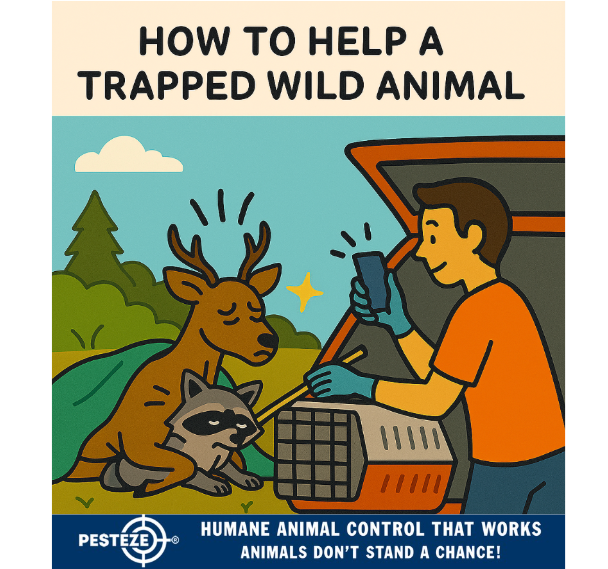HOW TO HELP A TRAPPED WILD ANIMAL

HOW TO HELP A TRAPPED WILD ANIMAL
SUMMARY
Helping a trapped wild animal requires caution, compassion, and legal awareness. Whether the animal is caught in fencing, netting, or urban debris, your response can mean the difference between life and death. This guide outlines safe, humane, and responsible steps to assist a wild animal in distress. From assessing the situation to contacting professionals, you’ll learn how to act effectively without putting yourself or the animal at risk.
FEATURES
-
Assess the Situation Safely: Observe from a distance to determine the animal’s condition and level of distress.
-
Avoid Direct Contact: Protect yourself from bites, scratches, or disease by using tools and protective gear.
-
Do Not Attempt Solo Rescue: Understand when professional intervention is necessary to avoid worsening injuries.
-
Minimize Noise and Movement: Keep the environment calm to reduce panic and prevent further entrapment.
-
Contact Wildlife Authorities: Reach out to licensed rehabilitators or animal control for expert assistance.
-
Document and Report: Take photos and note details to help responders assess and respond quickly.
GUIDE DESCRIPTION
Encountering a trapped wild animal can be alarming, but your actions must be guided by safety and legality. Whether it’s a deer tangled in a fence, a raccoon stuck in a dumpster, or a bird caught in netting, this guide helps you respond with care and responsibility.
Begin by assessing the situation from a safe distance. Look for signs of injury, panic, or exhaustion. If the animal is thrashing, vocalizing, or bleeding, it’s likely in severe distress. Avoid approaching too closely, as wild animals may lash out when frightened.
Never attempt to free the animal with bare hands. Use gloves, long sleeves, and tools like blankets or poles if immediate intervention is necessary—but only if the animal is calm and the risk is minimal. In most cases, solo rescue attempts can worsen injuries or provoke aggression.
Keep the area quiet and limit movement. Loud noises and crowds can escalate fear and make rescue more difficult. Ask bystanders to step back and avoid using flash photography or bright lights.
Contact local wildlife authorities or licensed rehabilitators immediately. Provide clear details about the animal’s species, location, and condition. These professionals have the training and equipment to perform safe rescues and offer medical care.
If safe to do so, document the scene. Photos and notes can help responders prepare and may be useful for follow-up reports or public awareness.
Helping a trapped wild animal is a noble act, but it must be done with caution and respect. By following these steps, you’ll ensure the best possible outcome for both the animal and yourself.
- Amy Chang


Comments 0